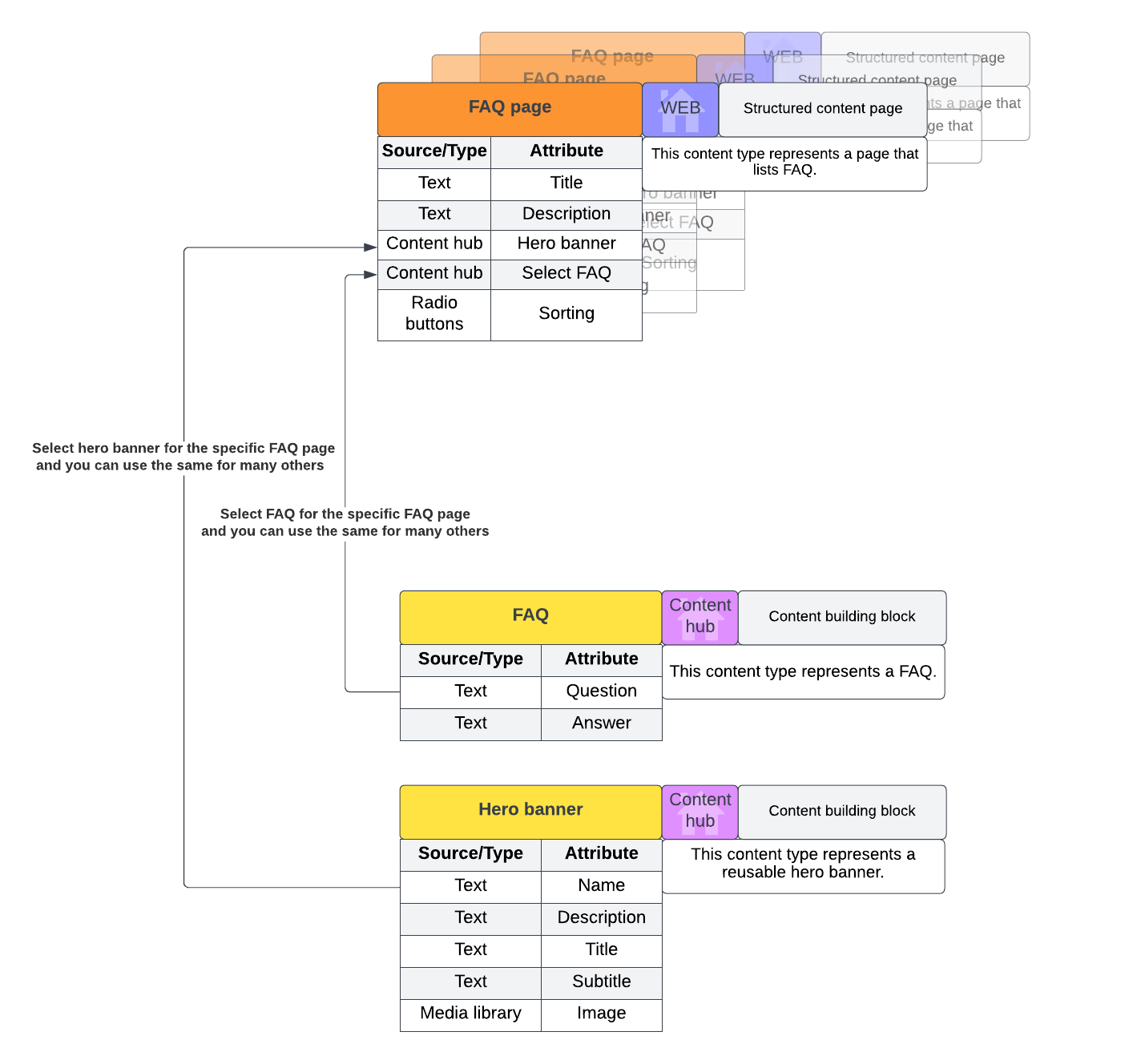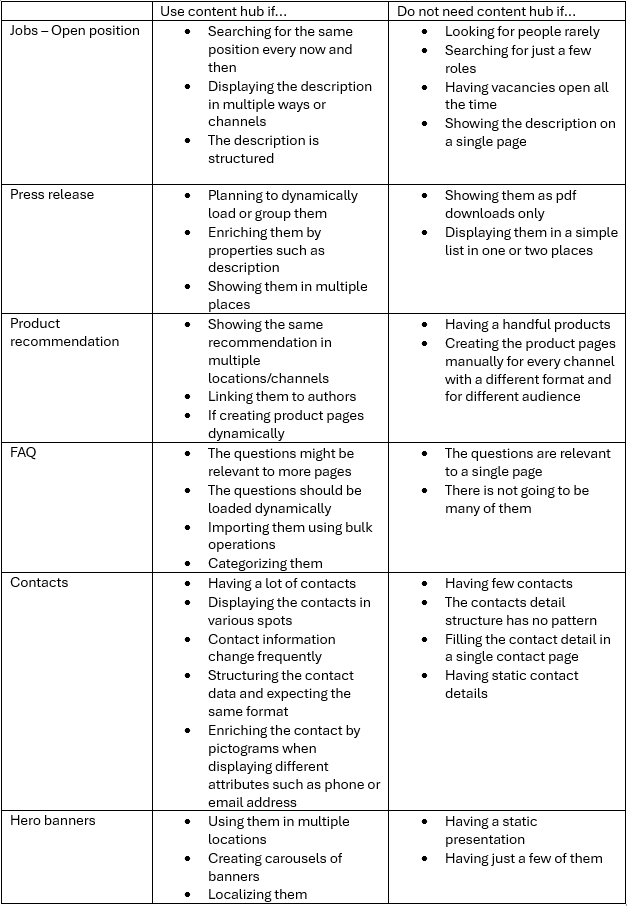If you compare Xperience by Kentico (XbK) to previous versions of the Xperience platform, you will find numerous differences. XbK marks a shift from a traditional to a hybrid Content Management System (CMS), integrating some features from headless solutions. One of the new features introduced by XbK is the content hub. This is an important feature as it’s not merely a technical upgrade; it requires a mental shift by the content editor to be utilized properly and to deliver its full potential.
When should you use the content hub? What are its benefits? And what are its pitfalls? How can you model content efficiently? If these questions are relevant to you, read on.
What is content hub
The content hub acts as a centralized database where digital content is stored, allowing editors to easily access and reuse materials for various marketing channels. Editors can select appropriate content for new posts on websites, social networks, or email campaigns, and quickly adapt materials for different platforms by revisiting and reusing successful elements. This streamlined process ensures consistency and connectivity across all media, enhancing the effectiveness of digital marketing efforts with minimal effort.
Key benefits of content stored in content hub
If a content editor decides to store a particular element into content hub, they can expect the following advantages:
Reusability – content pieces become versatile assets; one element can be reused for different purposes.
Duplication prevention - a change to an element is reflected in all places where it is used, no need to change each instance.
Easy localization - we localize only once for all instances.
Structured organization - fixed attributes for a given content element.
While all these features are desirable, there is a price the content editor pays for using the content hub, so it must be used wisely. Let us look at some basic examples.
A Page Title is an example of a content element which should not be stored in the content hub. Even though two pages can have the same title (think of a page called Overview), there is no logical connection between these two and if you decide to change one title, you might want to keep the other one unchanged.
On the other hand, FAQs or a Hero banner are examples where it can make sense to store them in the content hub because these elements can easily be displayed in multiple places on the website (or used in other channels).
Image 1 – An example of content hub content – FAQ page showing FAQ items stored in content hub independently on their usage location.
Pitfalls of content hub approach
Dividing content into smaller sections demands more from editors, who must be familiar with their library's contents, knowing how to find or create what they need. Disadvantages also include the higher up-front labour involved in designing and developing the system. Operational demands should also be mentioned. Particularly in the case of team collaboration, the organisation and naming convention for storing content needs to be established and followed to achieve consistency and maintainability.
Content modelling - the foundation of effective content hub
The foundation of effective content hub utilization lies in content modelling. Creating a content model requires knowing:
how much content we want to create,
how we want to create it,
where we want to publish it,
what we want to achieve with it,
who will be involved in its creation,
and other factors.
Based on this input data, we need to determine how deeply our content will be structured and how it will be connected. This analysis will guide us in deciding whether a content hub is necessary or if it might just overcomplicate everything. Can you identify your preference before building the content model? In the table below, we highlight the main features of both choices to help you decide.
Low structured content supports
Creativity of content editors
Diversity of published content
Content independence - a change in one place does not affect other content
Shorter content model preparation and implementation
Highly structured content supports
Editor guidance of what is expected for each content
Consistent look and feel of posts, brand presentation
Content coherence - a change in one place is reflected globally
Faster content creation on the fly
One should consider what content is appropriate to structure and what content is so special that it would only create clutter and make the library messy when designing a model.
Practical application - to hub or not to hub?
Making such a decision requires experience with content model design and content operations.
When contemplating the use of a content hub, consider its relevance to your content types and operational workflow. For instance, content that is frequently reused across channels, such as job descriptions or product recommendations, benefits greatly from being stored in the hub. Conversely, content that is rarely updated or specific to a single channel may not necessitate inclusion.
To help you make the right decision, here are some examples of content types that should or shouldn’t be included in the content hub.
It’s all about asking the right questions
Creating a content model for a media presentation happens at the beginning of a project, but it has a long-term impact on its success. Therefore, it's a good idea to spend more time asking content editors and marketing strategy developers the types of questions that will guide us on how granular the content should be. The questions can be as trivial as "How often will you create the content?", "Can it be broken down into smaller discrete units?", "Are these smaller units likely to be used again or in different places?" and finally, you can ask the overarching question, "Is it worth investing in the benefits of structured content?"




Great summary!